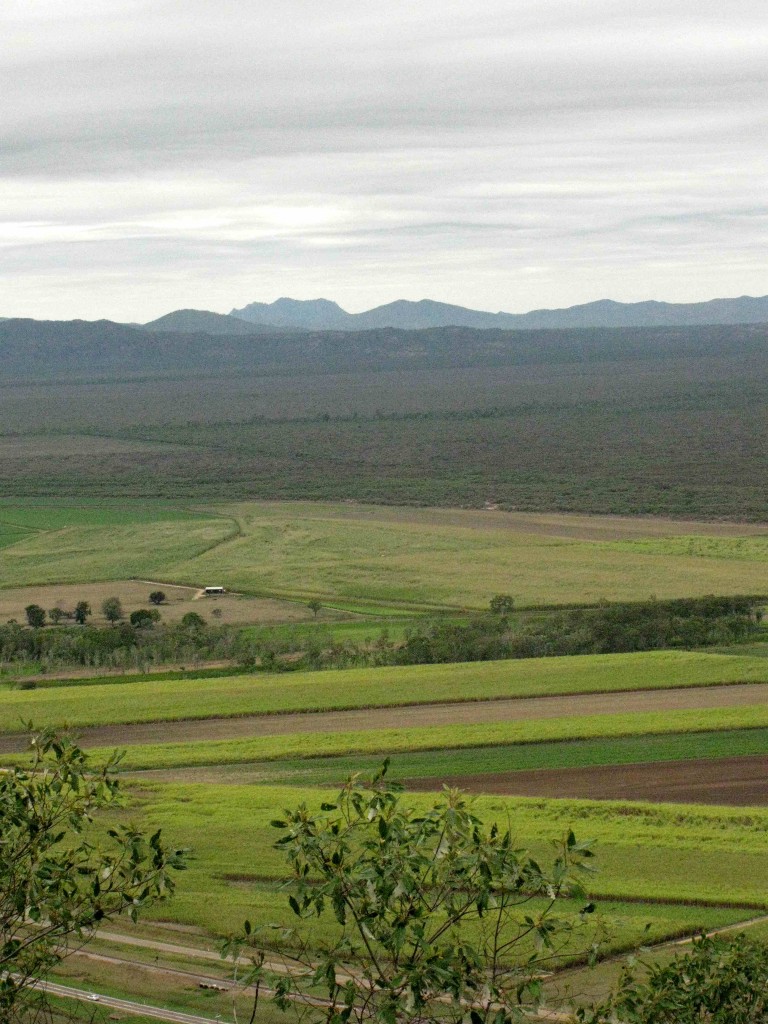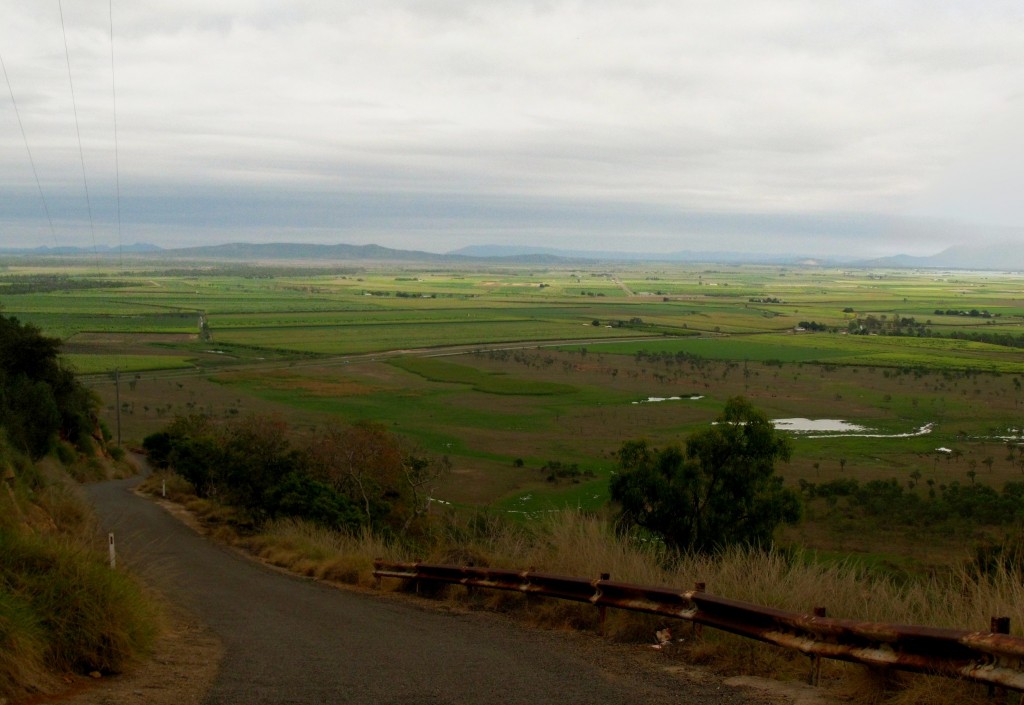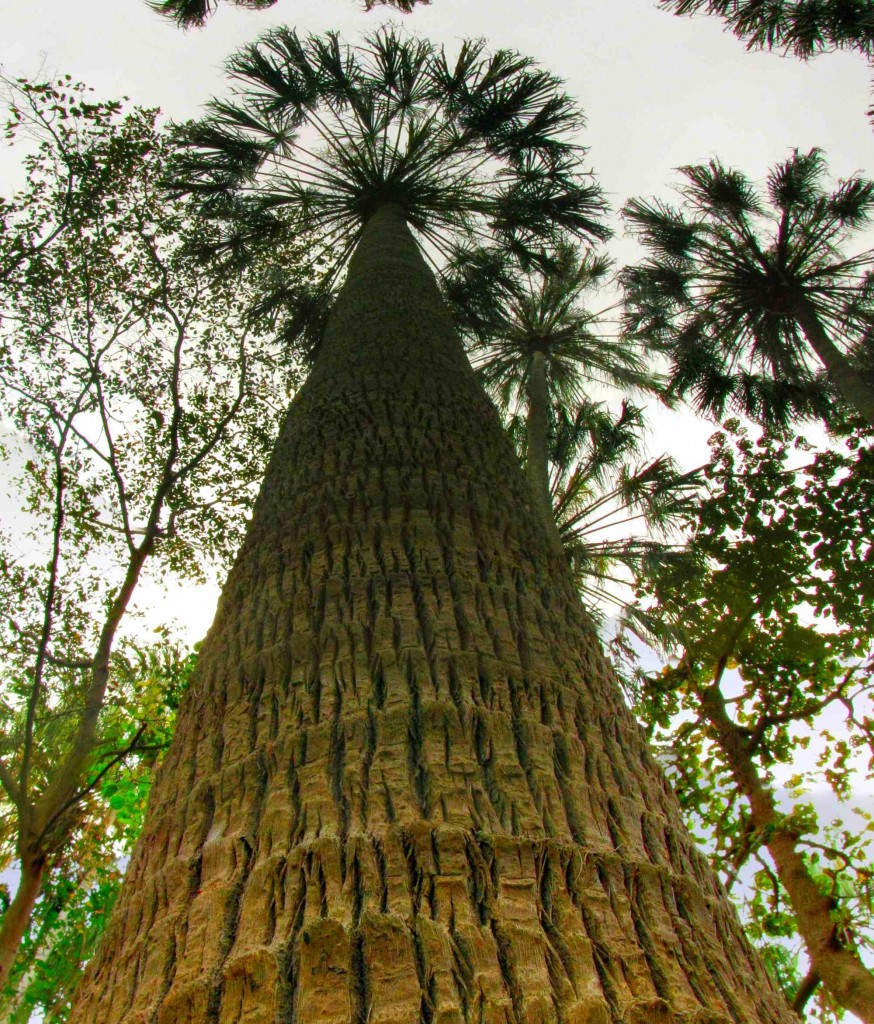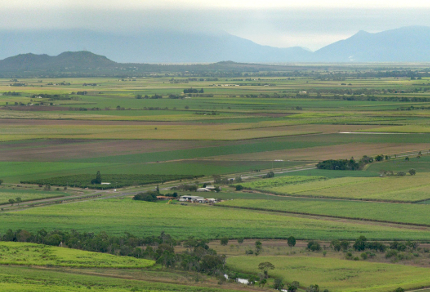
View of Burdekin Shire to the North of Mount Inkerman (© Vilis Nams)
In early morning, Vilis and I drove the Bruce Highway south from Townsville into that collage of vividly-green sugarcane plantations, tawny grazing lands, and dark, forested ranges of low peaks that comprise Burdekin Shire. At 9 a.m., we stood atop Mount Inkerman, a dozen kilometres south of Home Hill (and up what may be the steepest public road in Australia) and gazed out over the shire, the highway and adjacent railway tracks forming an angled corridor through that collage.

View of Burdekin Shire southwest from Mt. Inkerman (© Magi Nams)
A chill wind licked our bare limbs and carried to our ears the bawling of cattle in pastures far below. A pied currawong rang its bell over the mountain, its rich tones causing a male yellow-bellied sunbird to sound tinny in comparison as it sang while flitting about in dense shrubs at the summit. Cane fields stretched in a vast expanse to the north, bordered on the east by forested land and then the ocean. To the west, the agricultural land was replaced by bush and inland ranges of peaks, those more distant lit by capricious sunbeams, while nearer ranges brooded under a blanket of grey cloud.
Those distant ranges hinted at the vastness of Australia, a country which stretches 4000 kilometres from east to west. Beyond those peaks lie semi-arid lands and red deserts occupying two-thirds of Australia’s landmass. We (and most Australians) live amid a green fringe of more hospitable territory that hugs the continent’s coastline and offers moisture to sustain horticulture and urban development.
After leaving the summit, we descended the steep grade that would be a road to death if the Burdekin ever saw snow or ice. The view out over the cane fields spilled away into the distance, drawing the eye over the flat land of the coastal plain to those enticing, forested ranges of hills bucking up against the horizon.

View of Burdekin Shire to the west of Mount Inkerman(© Vilis Nams)

Vilis with Palms at Plantation Park, Ayr (© Magi Nams)
After our descent, we drove a road that curled around the south side of the peak. We saw great egrets, magpie geese, and comb-crested jacanas in a roadside wetland, and a roadkilled feral pig that lay black and burly on the verge opposite a cane farm homestead. Then we headed north to Ayr, pausing to explore Plantation Park for an hour. There, we strolled through an Aboriginal bush tucker garden, where startled wallabies bounded through herbs and grasses among the slim boles of towering fan-leaved palms. Yellow and white-throated honeyeaters and rainbow bee-eaters voiced their distinctive calls from the edges of a paperbark swamp. A stark contrast to the manicured appearance of the remainder of the park, the bush tucker garden exuded a sense of the natural and of peace.

Plantation Park Palms, Ayr (© Vilis Nams)


